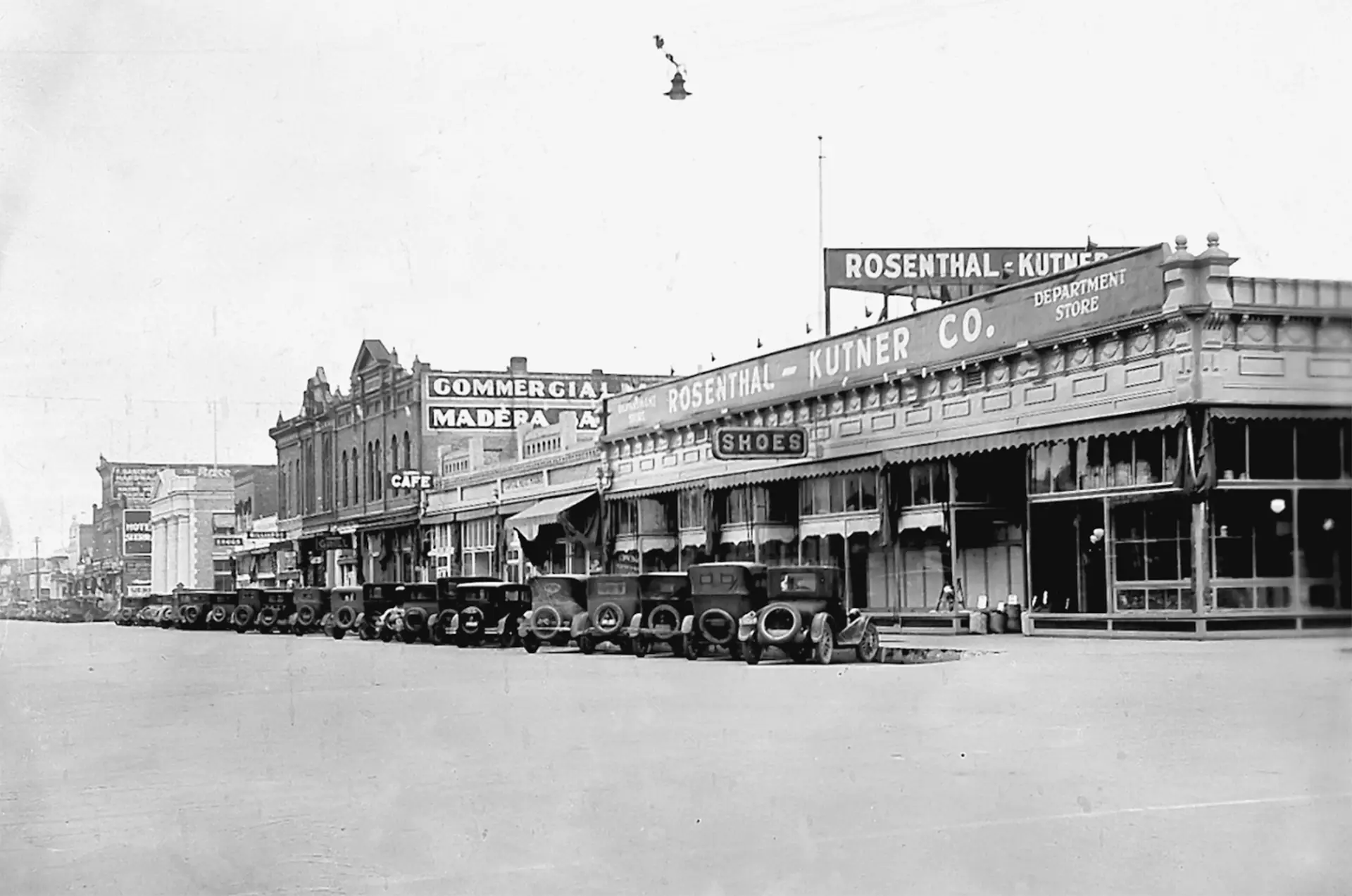In July 1966, somebody decided to change the appearance of downtown Madera by taking the top off of the Richard Mah building in the 200 block on the south side of Yosemite Avenue.
The demolition project was the talk of the town and made the front page of The Madera Tribune. The landmark building had been around for a long time, and many hated to see it go, for it had once housed Madera’s first Masonic Lodge, Athletic Hall, and the old Madera Opera House in which Madera’s first movies were shown.
Although the Madera County Assessor’s office dated the construction of the building at 1900, John Gordon, one of Madera’s early mayors said it was standing when he came to town in 1897.
When the Roy Ben Lyon Construction Company set about in 1966 to level the building to the height of adjoining, one-story businesses, workmen found traces of Madera’s heyday. Penciled on its walls were the names of the Madera High School’s graduating classes from 1901 and 1909.
There were a few folks at the time who remembered when high school graduations took place in the upstairs auditorium of Athletic Hall. There were also a few residents who remembered that Madera’s very first movies were shown in that building.
It was Return Roberts, an early Madera pioneer and head of the Madera Flume and Trading Company, Madera’s second lumber enterprise, who erected the Richard Mah building and established the company’s office there.
The lumber company shared the downstairs with Madera’s first bank (the bank vault is still in what is left of the building) and a grocery store. Upstairs were the rooms of the Masonic Lodge and the auditorium that was variously called the Masonic Hall, the Opera House, and later Athletic Hall.
In the early years of the 20th century, Maderans flocked there to watch those high school graduations, and attend the Merchants Drinking Club and the amateur boxing matches.
Mrs. Ila Curtin recalled other community events such as the Orpheum circuit shows, popular dances that included the cake walk and a grand march, and the grand bazaars, but it was those early thespians who really drew the crowds.
Maderans would flock to the Opera House to view live stage performances. The seats were built in sections and were movable. The rear of the auditorium was at the front of the building, while to the rear of the building an old wooden affair was attached. This was the stage. It was about two feet above the floor level of the auditorium. In the front of the stage was an orchestra pit.
Patrons in those pioneer days would enter the Opera House and take a seat. The higher-priced ones were nearer the stage, while the cheaper seats were in “Tiger Heaven,” near the back.
At show time, a roll-type curtain was lowered and raised with “an evenness in proportion to the experience of the one who pulled the ropes, much like the effect of raising a Venetian blind. The less experienced always served to amuse the audience to the degree of the operator’s embarrassment.”
The shows that came to the Opera House were varied. One favorite was that interminable rescue from the buzzsaw. The crowd would “ohh” and “ahh” while an Ole Olson or Yon Yonson rescued the beautiful blonde (usually bleached) heroine who had been tied to a log that was speeding into the teeth of a large circular saw.
The saw was turned by hand and frequently had to be stopped when it appeared that Ole or Yon was a little too slow in making the thrilling rescue. Very few noticed, however, given the tenseness of the melodramatic moment.
On special show nights, J.A. Franchi, who was to one day become the Madera Chamber of Commerce President, would “shinny” up one of the telephone poles that lined Yosemite Avenue and then sneak along the old tin awning and squeeze through the windows into the performance. Franchi thus averted “an argument with the ticket taker” by not using the regular entrance, which was through the makeshift stairway on the west side of the building.
For years, the Opera House served Madera, not only as a place for traveling theatrical troupes to perform, but for 4th of July and Mexican Independence Day celebrations, evening school programs, graduations, and twice as a school while the townsfolk were rebuilding the Eastside School after two burnings.
Then came the movies. About 1912, Charles Leggett started showing the town’s first movies in the Opera House, and Madera’s cultural life entered a new phase.
The Opera House, aka Athletic Hall, continued to attract Maderans for a while, but then Walter Brown built the Madera Theater on B Street, and the Lincoln School auditorium provided a venue for public events. Athletic Hall fell into disuse.
It was inevitable that it would fall to the workmen’s hammers and axes in order to contribute to the downtown improvement program, but when it came down, a lot of Madera’s memories went with it.
Originally published in the Madera Tribune




